Value Management Systems Model ™ (VMSM)
Building on QDI’s Value Management Workbook™ which looks outside the company to learn the customer’s perception of a product’s value, the Value Management Systems Model™ takes a deep look at each of the functions inside the company and pinpoints areas that need to be changed to achieve goals.
The Value Management Systems Model™ is particularly effective when a business is looking for very specific results (e.g., a certain level of revenue, or a new mix of products or to increase sales through distributors). If you’re about to launch a product or post launch, the Systems Model can be used to identify weak links that must be corrected to reduce risk and save marketing dollars.
QDI consultants use the Value Management Systems Model to verify elements of the game plan are aligned correctly to achieve goals. We begin by looking at the market share components directly impacting sales revenue. These include:
- Addressed market — the market you have elected to address
- Market presence — the percent of customer’s who are offered / consider your product at the point of sale
- Close rate — the portion of the sales you win when you are considered
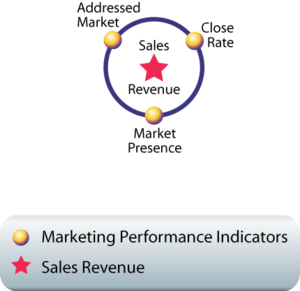
Next, we broaden our analysis to include the three major forces that drive market performance:
- Channel power – a measurement of your service and relationship strength and customer presence (shelf space). Ability to educate and communicate your offering and get the product to the customer
- Product power – a measurement of the product’s or service’s performance. Is it capable of standing on its own and outperforming the competition. Does it deliver value? What are its unique benefits?
- Brand power — a measurement of how the customer perceives your offering in terms of being the “safe buy” or fitting with his/her own self image.
We widen our scope to examine the activities and programs that influence channel, product and brand power.
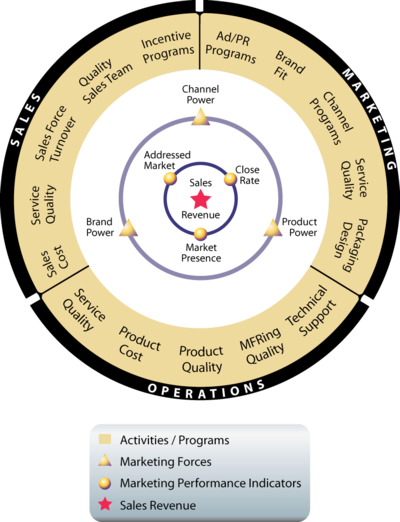
We expand our analysis even further to evaluate the internal processes (sales training, customer service, product management, recruiting, employee retention and more) to see if they’re aligned to deliver the required activities/programs to support revenue goals.
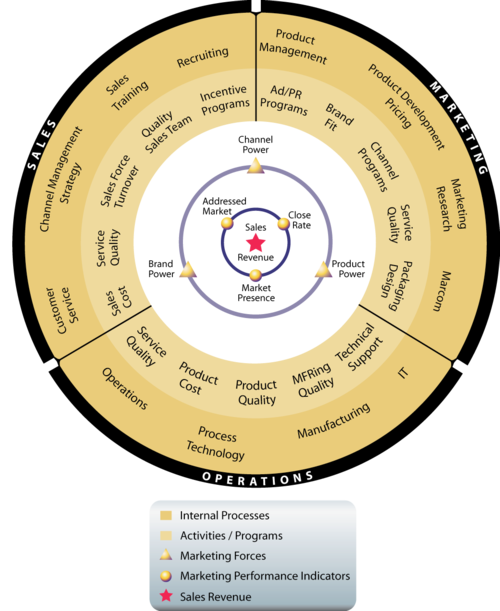
Finally, we assess the effectiveness of the business decisions you’re relying on to deliver growth.
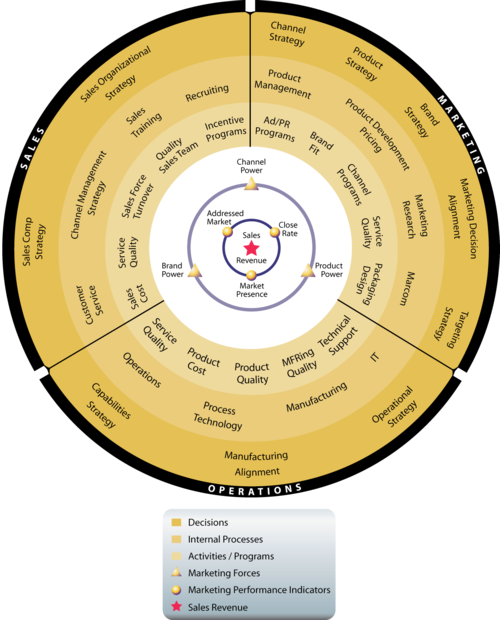
To demonstrate how the VMSM works, let’s take a hypothetical look at a business unit that is not meeting its revenue targets. We’d begin by examining the three market performance indicators: close rate, market presence and addressed market. We might discover market presence and addressed market aren’t an issue, but close rate is well below what it should be. Many factors can impact close rate.
Next we’d look at marketing forces including channel, brand and product power to assess their impact on close rate. Our examination might reveal channels are communicating and educating customers and product power is good; but brand power falls short. Prospective customers perceive the risk of purchasing the offering as too high or benefits too low compared to competitive alternatives. Quality is an issue.
The customer’s perception of quality has a lot to do with close rate. We’d have to dig deeper to evaluate the business’s activities and programs. We’d look at messaging, advertising and public relations programs and service level and quality. Our work might reveal messaging is the weak link.
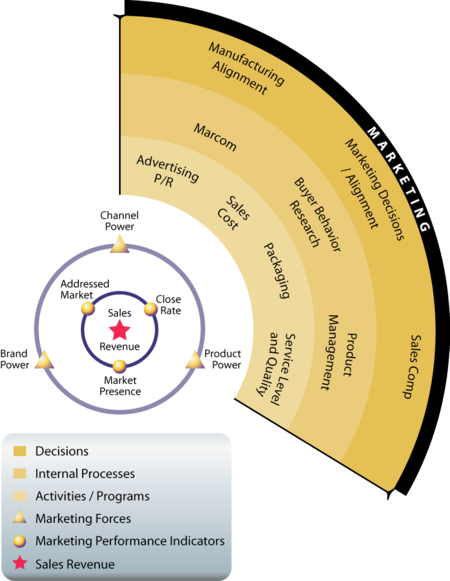
Next we’d explore the internal processes (product management and marcom) that drive messaging. Are they focusing too much on offering the product at a low price point and not enough on the benefits the product delivers? Did market research dig deep enough to learn customer needs, attitudes and perceptions? Was too much emphasis placed on product features and not enough on communicating the company’s reputation for standing by its offering.
Finally we’d step back and look at the marketing decisions that drove the development of the company’s processes. By using the VMSM to take a close look at all the dimensions of a business unit, we learn where to make corrections to improve performance.
The Value Management Systems Model is not a management model … it’s a tool we created to give management a critical look at the overall business unit. As organizations evolve or enter new markets, it’s easy to lose alignment, focus, or both. QDI’s Value Management Systems Model is a tool to help you get back on track.
The VMSM is based on the premise that two planning processes must converge to maximize your market effectiveness. The first process concentrates on the customer needs you can uniquely meet. The second process focuses on aligning your organization to effectively meet those needs.
To make the best decisions, you need the best information. Save money and improve performance, by using the Value Management Systems Model to identify weak areas in your business that could prevent you from realizing your objectives.

.png)